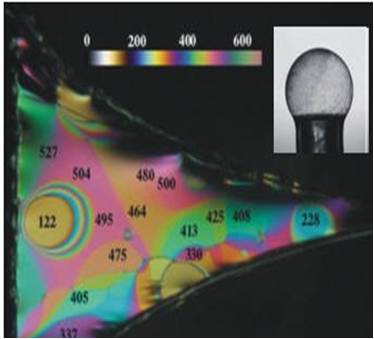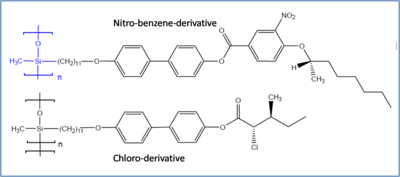
The Zentel group successfully prepared smectic-C* elastomer films that exhibit piezoelectric effects.
This side chain LCE is typically prepared in a cell, but may also be prepared as a spherical balloon.
(see inset image). The ferroelectric LCE polymer network is switchable by an electric field.
These photo-crosslinked film show an asymmetric ferroelectric
switching and piezo-effects for both smectic-C* and smectic-A phase. Polymer network formation stabilizes
the tilted smectic-C* phase.
Patrick Beyer, a graduate student from Prof. Zentel's
group visited the NLCMF in January 2007 to provide instruction for making
these materials.
This material is prepared in a rubbed polyimide glass cell with the final LCE polymer network prepared photo-polymerization in the cell at the appropriate temperature. Material preparation involves the following steps.

Two variants of the LCE may be prepared, based on two different chiral mesogens: a nitro-benzyl derivative or a chiral chloro-alkane derivative covalently connected to the biphenyl mesogen. The smectic LC polymer is assembled sequentially, first connecting the the biphenyl derivative to the siloxane polyner, then the chiral component to the biphenol moiety, and finally the crosslinker molecule. Once loaded into a cell, the material is photo-crosslinked to make the LCE.


























